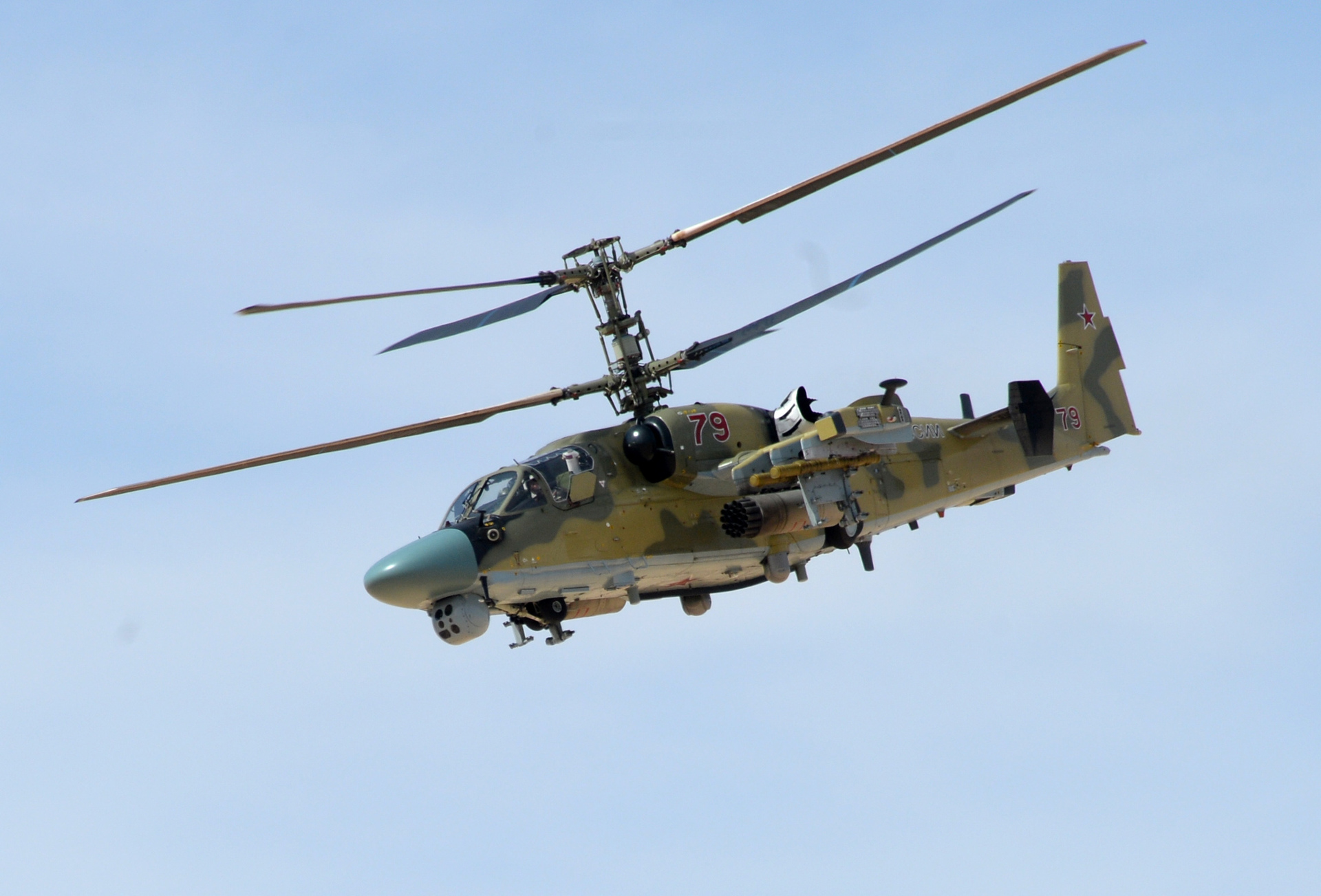The Kalashnikov Concern is modernizing the Vikhr-1 anti-tank guided missile, said the head of the group of companies Dmitry Tarasov during a presentation in the Patriot park near Moscow.
“The range of its (Vikhr-1 rocket. - RT ) use is up to 8 thousand meters, but we are now working on increasing the range to 10 km,” he explained.
Recall that the Vikhr-1 guided missile was developed at the Tula Instrument Design Bureau in the 1980s. The rocket was originally created as the main anti-tank weapon of the promising at that time the Ka-50 army helicopter and the Su-25T aircraft. The missile is capable of striking equipment protected by armor, including active equipment, as well as aircraft moving at speeds up to 800 km / h. At the same time, the launch height of the rocket is up to 4 km, which "Whirlwind-1" reaches in just 9 seconds at a speed of up to 610 m / s. These characteristics allow one attack helicopter to hit several targets at once and reduce its vulnerability.
Today the missile is used as part of the 9K121M Vikhr-M anti-tank guided weapon system, also developed in Tula.
The missile is guided using an automatic sighting system. At a distance of 12 km from the planned target, the operator of the complex turns on the mode of television scanning of the terrain. After the target appears on the screen, the pilot directs the helicopter towards it and activates the automatic tracking system. Upon reaching the permissible range, the missile is launched automatically.
The complex uses a laser-beam guidance system, while the radiation power in this case is below the level that would allow foreign warning systems to detect an impending attack. The missile hits targets with an accuracy of 80%.
The resumption of the mass production of the Vikhr-1 ATGM occurred during the implementation of the state program for rearmament of the Russian army, launched in the late 2000s.
As part of this strategy, it was planned to make the Ka-52 Alligator, which replaced its predecessor Ka-50, as the main attack helicopter of the Russian Air Force.
In the summer of 2013, the Ministry of Defense announced a competition among Russian defense enterprises for the production of the Vikhr-1 ATGM. Its winner was NPO Izhmash, which later became part of the Kalashnikov Group of Companies.
In October 2015, the enterprise supplied the first batch of Vikhr-1 guided anti-tank missiles to the Russian military, and in 2016, the Kalashnikov concern signed the first contract for the supply of these missiles abroad. However, the company did not specify which state became the importer of Russian missiles.
Battle trials
ATGM "Vikhr-1" was baptized by fire during the operation of the Russian Armed Forces in Syria. Helicopters Mi-24, Mi-28N "Night Hunter" and Ka-52 "Alligator" take part in the protection of the Russian air base, and also destroy armored vehicles and manpower of the enemy.
As the Deputy Chief of the General Staff, Lieutenant General Igor Makushev, stated in August 2017, the Mi-28N Night Hunter and Ka-52 Alligator helicopters successfully used Vikhr-1 missiles along with Attack-1 missiles during the operation in Syria. "And" Needle ".
He noted that the military equipment was operated in different weather conditions, during the day and at night.
“At the same time, effective combat use of the Ataka-1 and Vikhr-1 anti-tank guided missiles and Igla guided missiles has been ensured,” the general noted then.
- Helicopter Ka-52 "Alligator" during a combat operation in Syria
From the point of view of experts, the Whirlwind-1 rocket demonstrated quite high combat qualities in Syria, despite the fact that its development began in the last century.
“As a rule, in the most advanced armed forces of the world, the technical basis is the developments of the 80s of the last century. But since its inception, the rocket has been modernized. Now it uses a new solid fuel formulation, so while maintaining the overall layout and design, it was possible to increase the missile's range. The guidance system was also modernized, the accuracy and selectivity of action was increased, ”explained Viktor Murakhovsky, editor-in-chief of the magazine“ Arsenal of the Fatherland ”.
According to him, the foreign analogue of the missile is the American Hellfire missile, which is used on combat helicopters of the US Air Force and other countries.
Development of the AGM-114 Hellfire air-launched anti-tank guided missile began in the 1970s, and preliminary research work continued until 1976, when the Pentagon signed a contract with Rockwell International.
The Hellfire was adopted in the 1980s and became the first helicopter missile with semi-active laser guidance. The maximum firing range of the missile is 8 km.
“But the price of Vikhr-1 is lower than that of Hellfire, and in terms of range, the Russian design is superior to the American one. The Russian "Vikhr-1" is today an advanced product in its class, "the expert added.
A similar point of view is shared by military expert Alexei Leonkov. According to the expert, the Vikhr-1 rocket has not lost its effectiveness. As Leonkov explained, the modernization affected the guidance system, target transmission systems and instructions.
“Today, guidance is carried out via digital communication networks, command lines, respectively, it has become faster and more accurate,” the expert explained.
According to Leonkov, such air-launched anti-tank missiles are the main threat to armored vehicles, since they are capable of effectively hitting the enemy.
“The American Hellfire has a number of characteristics in common with the Russian missile, but in terms of range and penetration power, the Vortex is superior to its American counterpart. Today, Russian anti-tank missiles remain the best in the world, ”the expert says.

